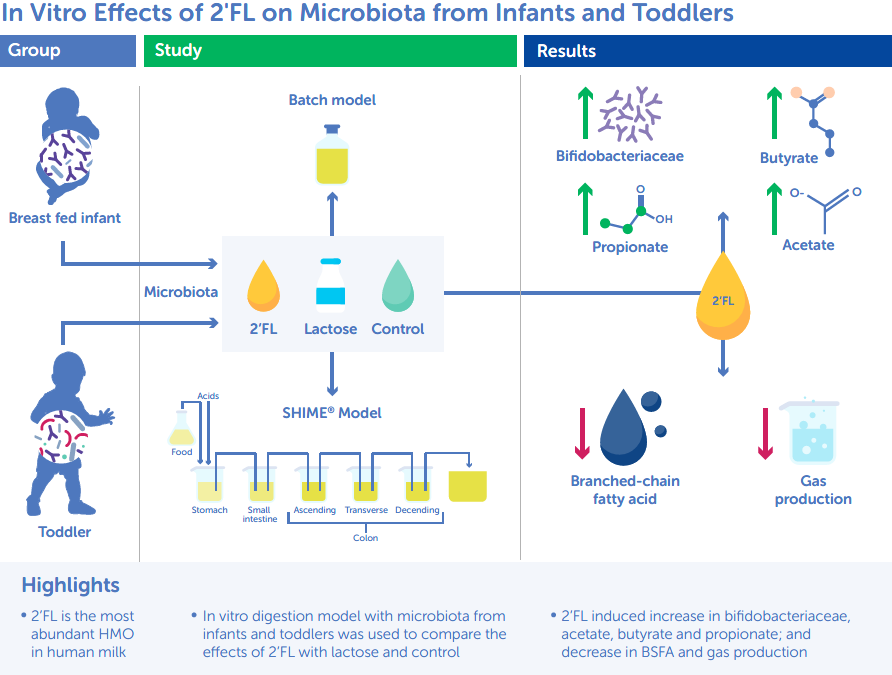A Comparison of the In Vitro Effects of 2’Fucosyllactose and Lactose on the Composition and Activity of Gut Microbiota from Infants and Toddlers
Health benefits of breastfeeding and human milk are widely recognised. HMOs – bioactive components found in human milk – are known to support the growth and metabolic activity of the gut microbiota, and 2’-FL is generally the most abundant of these. Previous studies have shown that adding 2’-FL to infant formula milk, either alone or in combination with the HMO Lacto-N-neotetraose (LNnT), helps to support immune and gut health. However, little is known about the specific role that 2’-FL plays and its impact on toddler microbiota.

Summary:
This study, funded and co-authored by Nestlé Research, used two in vitro models – 48-hour fecal incubations, and the long-term mucosal simulator of the human intestinal microbial ecosystem (M-SHIMEÒ) – with fecal samples from 3-month-old breastfed (BF) infants or toddlers aged 2-3 years.
2’-FL fermentation was shown to strongly and immediately increase the relative abundance of Bifidobacteriaceae in the gut microbiota of both babies and toddlers. By contrast, lactose fermentation had a less immediate bifidogenic effect of the toddler microbiota, and did not increase the prevalence of Bifidobacteriaceae in the infant microbiota during the first two treatment weeks. 2’-FL fermentation was also associated with consistently lower gas production than fermentation of lactose. This suggests that 2’-FL not only promotes the growth of beneficial bifidobacteria, but may also help reduce intestinal discomfort. The study’s authors further theorise that 2’-FL may plausibly help to maintain the presence and activity of bifidobacteria in the infant’s gut beyond six months of age, when weaning begins to diversify their microbiota.
If you liked this post you may also like

